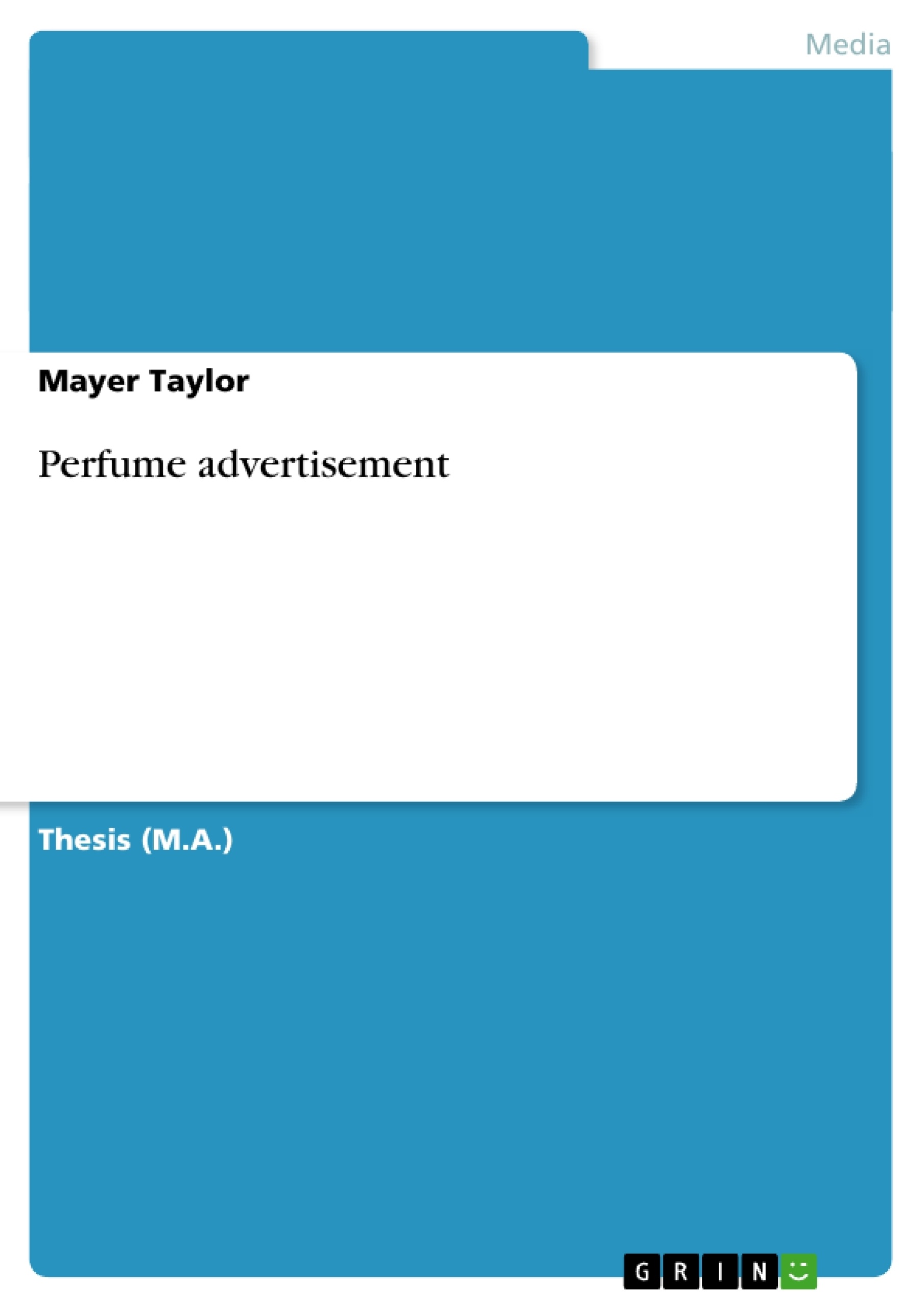When opening a women’s magazine from the 1970s you immediately notice the provocative perfume advertisements that sometimes featured a highly sexualized idea of women and men. This thesis compares perfume advertisements featured in Cosmopolitan and Redbook magazines. By using qualitative and quantitative content analysis when analyzing the various perfume advertisements, the messages of these advertisements were analyzed. Advertisements of perfume products create and reflect cultural notions regarding the status of women and gender roles. Trends from Cosmopolitan and Redbook perfume advertisements revealed:
Table of Contents
- Introduction
- Literature Review
- Methodology
- Results and Discussion
- Conclusion
Objectives and Key Themes
This thesis aims to analyze perfume advertisements from Cosmopolitan and Redbook magazines between 1970 and 1974, examining how these advertisements portrayed women and reflected societal views on gender roles during a period of significant feminist activity. The study uses content analysis and cultivation theory to compare the messages conveyed in the advertisements of these two magazines.
- The portrayal of women in 1970s perfume advertising.
- The relationship between perfume advertising and evolving societal gender roles.
- A comparison of advertising strategies employed by Cosmopolitan and Redbook.
- The influence of perfume advertisements on the opinions and behaviors of female consumers.
- The historical context of the second-wave feminist movement and its reflection in advertising.
Chapter Summaries
Chapter I: Introduction: This chapter sets the stage for the thesis by providing background information on Cosmopolitan and Redbook magazines during the 1970s, focusing on their target audience and the prevalent use of sexual appeals in perfume advertising. It introduces the concept of "ideal beauty" and its problematic implications, explaining the rationale behind selecting these specific magazines and time period for study. The chapter also previews the methodology and the thesis's central argument—that perfume advertisements during this era significantly influenced the perceptions and behaviors of women and broader society, reflecting both the progress and setbacks of the women's liberation movement. The chapter highlights the substantial role of advertising within these magazines and leverages existing research that indicates the powerful impact of magazine advertising on readers' emotional investment in the material.
Keywords
Perfume advertising, women's magazines, 1970s, Cosmopolitan, Redbook, gender roles, feminism, content analysis, cultivation theory, sexual appeals, ideal beauty, advertising influence.
Frequently Asked Questions: Analysis of Perfume Advertisements in 1970s Women's Magazines
What is the main topic of this thesis?
This thesis analyzes perfume advertisements from Cosmopolitan and Redbook magazines between 1970 and 1974, examining how these advertisements portrayed women and reflected societal views on gender roles during a period of significant feminist activity.
What is the methodology used in this research?
The study employs content analysis and cultivation theory to compare the messages conveyed in the advertisements of the two magazines.
What are the key themes explored in the thesis?
Key themes include the portrayal of women in 1970s perfume advertising, the relationship between perfume advertising and evolving societal gender roles, a comparison of advertising strategies in Cosmopolitan and Redbook, the influence of perfume advertisements on female consumers, and the historical context of the second-wave feminist movement and its reflection in advertising.
What magazines are analyzed, and what is the time period covered?
The thesis analyzes perfume advertisements in Cosmopolitan and Redbook magazines from 1970 to 1974.
What is the central argument of the thesis?
The thesis argues that perfume advertisements during this era significantly influenced the perceptions and behaviors of women and broader society, reflecting both the progress and setbacks of the women's liberation movement.
What is the purpose of the introduction chapter?
The introduction provides background information on Cosmopolitan and Redbook in the 1970s, introduces the concept of "ideal beauty" and its implications, explains the rationale for the chosen magazines and time period, previews the methodology, and outlines the thesis's central argument.
What keywords are associated with this research?
Keywords include: Perfume advertising, women's magazines, 1970s, Cosmopolitan, Redbook, gender roles, feminism, content analysis, cultivation theory, sexual appeals, ideal beauty, advertising influence.
What is covered in the chapter summaries?
The chapter summaries provide a brief overview of each chapter's content, including the introduction's background information and the thesis's core arguments. More detailed summaries are provided within the document itself.
- Quote paper
- Mayer Taylor (Author), 2012, Perfume advertisement, Munich, GRIN Verlag, https://www.grin.com/document/267072




